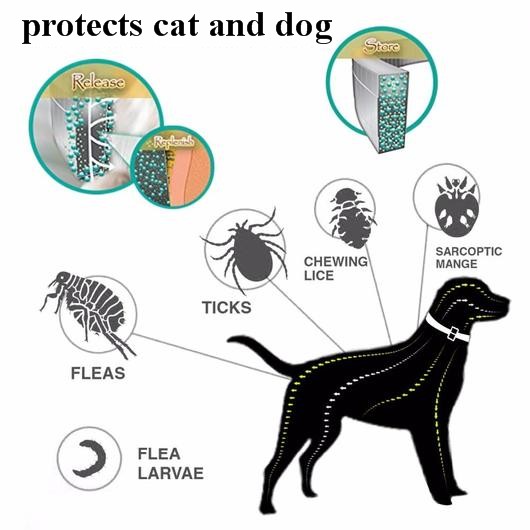4 Signs Your Dog Has A Tick : Ticks are small spider-like parasites that can cause a number of unfortunate symptoms in dogs, as they feed off the nutrients in their blood. Dogs are particularly susceptible to ticks in the summer months, but ticks can still be found year-round. Not to be confused with fleas, which are usually much smaller and can “jump,” ticks are visible to the naked eye and usually stationary, embedding themselves into the skin to feed on their host’s blood. Ticks can be especially dangerous as some might carry tickborne diseases that infect both humans and dogs, such as Lyme disease.

Though they range in colour, ticks usually have eight legs and may appear almost like a bumpy wart at first glance. They can be found anywhere on your dog’s body, but often attach themselves near the head, neck, armpit, and groin areas, as well as the feet/paws.
There are a number of ways to keep your dog from getting ticks and the potential diseases they carry by using regularly-administered preventive treatments that ward off ticks and other parasites safe. For daily preventive measures, it’s a good idea to run your fingers through your dog’s fur after they go outside, and inspect for any small bumps, which could indicate a tick has latched on. Some shampoos have treatments included in their ingredients that combat both fleas and ticks, which may be helpful to regularly keep the pests at bay.
How Do I Know If My Dog Has A Tick?

While it’s helpful to know what a tick looks like, it’s also important to be on the lookout for other signs that your dog has ticks.
- Excessive Itching And Licking In Specific Areas
Much like fleas, ticks can make your dog quite itchy and uncomfortable. If you see them excessively scratching or licking themselves in particular areas, it could be a sign your dog has a tick. Ticks are often found on the neck, feet, head, and ears. If your dog is scratching at any of those areas more often than usual, those are good places to check first.
- Redness And Inflammation On The Skin

If your dog has a tick bite, the skin area will usually be red and inflamed. This could be due to your dog itching and licking, which can cause further irritation to the skin. Ticks are also found in some of the hairless areas of your dog’s body, such as the groin, so be sure to check there for any indications of swollen and red skin.
If you do find a tick and remove it, be sure to monitor the site of the bite area for any further redness or swelling that lasts more than 24 hours. If the inflammation hasn’t subsided, you may need to contact your veterinarian to conduct tests and rule out further complications.
- Dried Scabs
Because ticks bite and embed into your dog’s skin, they’re likely to leave a scab in its place. When checking your dog’s body for any bumps, you may come across previous scabs from the removal of ticks. Random scabs along your dog’s body could be a sign your dog has a tick lingering somewhere else.
- Changes In Behaviour Such As Loss Of Appetite, Fatigue, And Weakness

While not all ticks carry disease, you should still look out for concerning changes in your dog’s behaviour, as some tickborne diseases can be life-threatening if not addressed quickly.
Lyme disease tends to cause a loss of appetite and depression in dogs, as well as fever and swollen lymph nodes. Ehrlichiosis, predominantly spread by brown dog ticks, is another tickborne illness that produces similar behavioural changes. If your dog displays any of these symptoms, you should consult your veterinarian so they can test your dog and offer antibiotics if necessary.
An alarming symptom to watch out for is tick paralysis, which may result in lameness or weakness in your dog’s legs, resulting in a difficulty to walk and stand up. However, removing the tick should cause this symptom to subside within a few hours.
Conclusion

Ticks and other parasites are a common and often concerning health topic for dog owners. Because these insects are small, it can be difficult to detect them right away without proper inspection.
If you notice any of the above signs from your dog, be sure to do a thorough body check for ticks and carefully remove them. Removing ticks requires carefully detaching them completely from your dog’s skin, ensuring no body parts remain and flushing it down the toilet. You can always save the tick in a small amount of alcohol solution in a plastic bag, and bring it to your veterinarian for inspection.
==========================================
5 Apt Questions To Ask Before Bathing Dogs With Skin Conditions






























